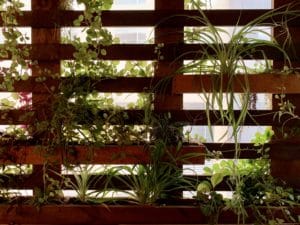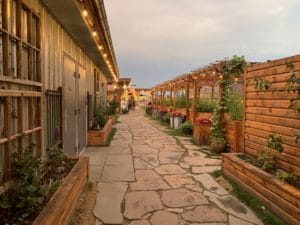Hello Fellow Readers,
I’ve just returned from the HippoCamp writer’s conference held in downtown Lancaster, PA, hosted by Hippocampus Magazine. The genre of the magazine, named after the part of the brain (hippocampus) that manages learning, emotions, and new memories, is creative nonfiction. As you know, nonfiction stories are true. The Lesson of the Leaf; a journey of love, loss, and hope is the title of a book underway that I hope to complete this year, God willing.
It’s a privilege to spend time and learn from writers, some well-known. Nick Flynn, who authored a story made into a popular movie Being Flynn with Robert DeNiro, was a keynote. His memoir is about unexpectedly meeting his father at a homeless shelter in Boston where Nick once worked. Through the story, we learn how his father ended up living on the streets and how they ended up back together.
 Tellus Irish Pub hosted the meet-and-greet. To my delight, green walls of wooden troths made into planters with tapestries of indoor plants adorned the pub. The setting sun was gleaning through the leaves. Upstairs was a green roof with a magnificent view of the quaint city. A natural stone walkway meandered to each brightly colored canopy of vendors serving food from other countries. I ordered a “Green Plate,” seemed fitting :^), from a mother and daughter preparing Somali cuisine. It was delicious.
Tellus Irish Pub hosted the meet-and-greet. To my delight, green walls of wooden troths made into planters with tapestries of indoor plants adorned the pub. The setting sun was gleaning through the leaves. Upstairs was a green roof with a magnificent view of the quaint city. A natural stone walkway meandered to each brightly colored canopy of vendors serving food from other countries. I ordered a “Green Plate,” seemed fitting :^), from a mother and daughter preparing Somali cuisine. It was delicious.
The restaurant built the green roof in 2011 to contribute to the downtown mission of reducing stormwater runoff, a growing trend of many urban areas since 2000. But green roofs date back to ancient times. The most legendary – the Hanging Gardens of Babylon built around 500 B.C is one of the Seven Wonders of the Ancient World.
Beyond the benefit of reducing stormwater runoff, living roofs keep interiors warmer in winter and cooler in summer. They create a habitat for wildlife and help lessen the heat island effect of cities laden with concrete and asphalt. Most important, green with splashes of color makes people happy, reducing stress in our fast-paced world.
 Much goes into building a green roof. There’s a waterproof membrane, multiple layers for drainage and root barriers, plus irrigation using rainwater capturing systems. Intensive green roofs have deep soil depths that can sustain a wide variety of plants, including trees and shrubs. Extensive roofs have shallow soil, only an inch to five inches, but are far lighter and require minimal maintenance.
Much goes into building a green roof. There’s a waterproof membrane, multiple layers for drainage and root barriers, plus irrigation using rainwater capturing systems. Intensive green roofs have deep soil depths that can sustain a wide variety of plants, including trees and shrubs. Extensive roofs have shallow soil, only an inch to five inches, but are far lighter and require minimal maintenance.
While walking around town after the meet-and-greet, I passed people that appeared to be homeless, which saddened my heart. Artfully painted pianos decorate downtown street corners there. One man sat solo, head bowed. He seemed forlorn as he pounded his index finger playing random notes. A few blocks further sat a group of ruggedly dressed men with tattered duffels and bags strapped in plastic. One had a small cart missing a wheel. The man at the keys played melodically making the piano painted in the colors of the rainbow sing. It occurred to me as I listened, every one of us is making music. Garden Dilemmas? AskMaryStone@gmail.com
I invite you to click through to a previous column that relates to green walls – Vertical Veggie Gardening.



